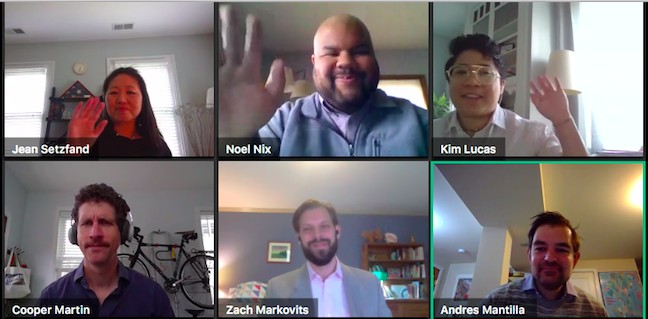Local Approaches to Serving Vulnerable Populations
Earlier this week, Cities of Service assembled city staff and civic engagement experts for a facilitated discussion on how city governments are meeting the immediate needs of their communities, with a focus on especially vulnerable residents during the COVID-19 outbreak.
Here is some of the great advice from our panelists:
Kim Lucas, Senior Director of Civic Research & Innovation
MetroLab Network
Colleges and universities have assets and material resources to support your COVID-19 response.
MIT swept its labs to collect personal protective equipment (masks, gowns, etc.) and other supplies that could be donated to first responders. Suffolk University opened a dormitory to a local nonprofit and helped increase Boston’s capacity to provide temporary housing for people experiencing homelessness during the outbreak.
As you surface gaps in service delivery and operations, look to educational institutions—their students, staff, and researchers—as partners to develop new and innovative approaches to address these problems.
Andrés J. Mantilla, Director, Department of Neighborhoods
City of Seattle, Washington
Outreach and engagement should be a central function of your crisis response.
Outreach and engagement should be a central function of your crisis response.
When engagement and outreach staff are at the table, we can see how everything relates, make those connections, and bring resources where there’s need. To confront misinformation, the Department of Neighborhoods activated our network of community liaisons to serve as a communications channel. Known and trusted within their communities, these individuals can relay critical messages from the city to vulnerable residents.
The internal city workforce even has its own redeployment strategy, moving staff from closed community centers and libraries to food banks and homeless shelters.
Zachary Markovits, Director of City Progress
What Works Cities
Iterate on your response.
If you understand what’s happening, you can see potential gaps and go where the need is deep. Using data tools and resources, cities are moving grab-and-go meal sites from schools to public housing, adjusting pick-up hours, and increasing the number of meals each individual can receive per visit.
By sharing data, you are building a network that leverages your intergovernmental partners and your stakeholder groups. Remember the paths that you’re blazing right now, and as we move into recovery, try to formalize these connections as much as you possibly can.
Cooper Martin, Director, Sustainability & Solutions
Center for City Solutions, National League of Cities
For more examples of how cities are responding, check out our local action tracker.
There are already 800 actions in there, with more added every day. It’s not just news coverage. There are executive orders, council actions, and ordinances that are being passed, with links to the actual language and the city websites.
You can filter and sort for the type of action that’s being taken and whether it affects government operations or housing or utilities. You can also look for particular populations and see possible solutions.
Noel Nix, Deputy Director of Intergovernmental Relations and Community Engagement
City of Saint Paul, Minnesota
The city is in a prime position to be a volunteer broker at this critical time.
The city is in a prime position to be a volunteer broker at this critical time.
Folks were coming out of the woodwork saying, “What can I do? How can we help?”, but civic groups couldn’t find where to plug in. The city knows the organizations out there meeting basic needs and who needs more help. We’re playing matchmaker.
As we continue through the emergency and head into recovery, cities are positioned to be a leverage point with philanthropic partners to really take efforts to scale in partnership with local organizations on the ground.
Jean Setzfand, Senior Vice President, Programs
AARP
We’re a membership organization, but our information and resources are available to everyone in your community.
On a weekly basis, our tele-town halls reach roughly 100,000 people across the nation, connecting them to federal, state, and local experts. Individuals can call into our fraud watch helpline or general call center for any number of questions. People can connect with a mutual aid network in their community. Staff and volunteers around the country are also making friendly calls to folks, just to check in, and closing the gap between all of us during this time.
Through these channels and local member networks, AARP can help cities reach their elderly residents with information they need and can trust.
Interested in learning more? Follow us @citiesofservice on Twitter, Facebook, Instagram, and LinkedIn. You can also view the full webinar recording and access panelist materials. Get in touch at covid19@citiesofservice.jhu.edu to continue the conversation.

